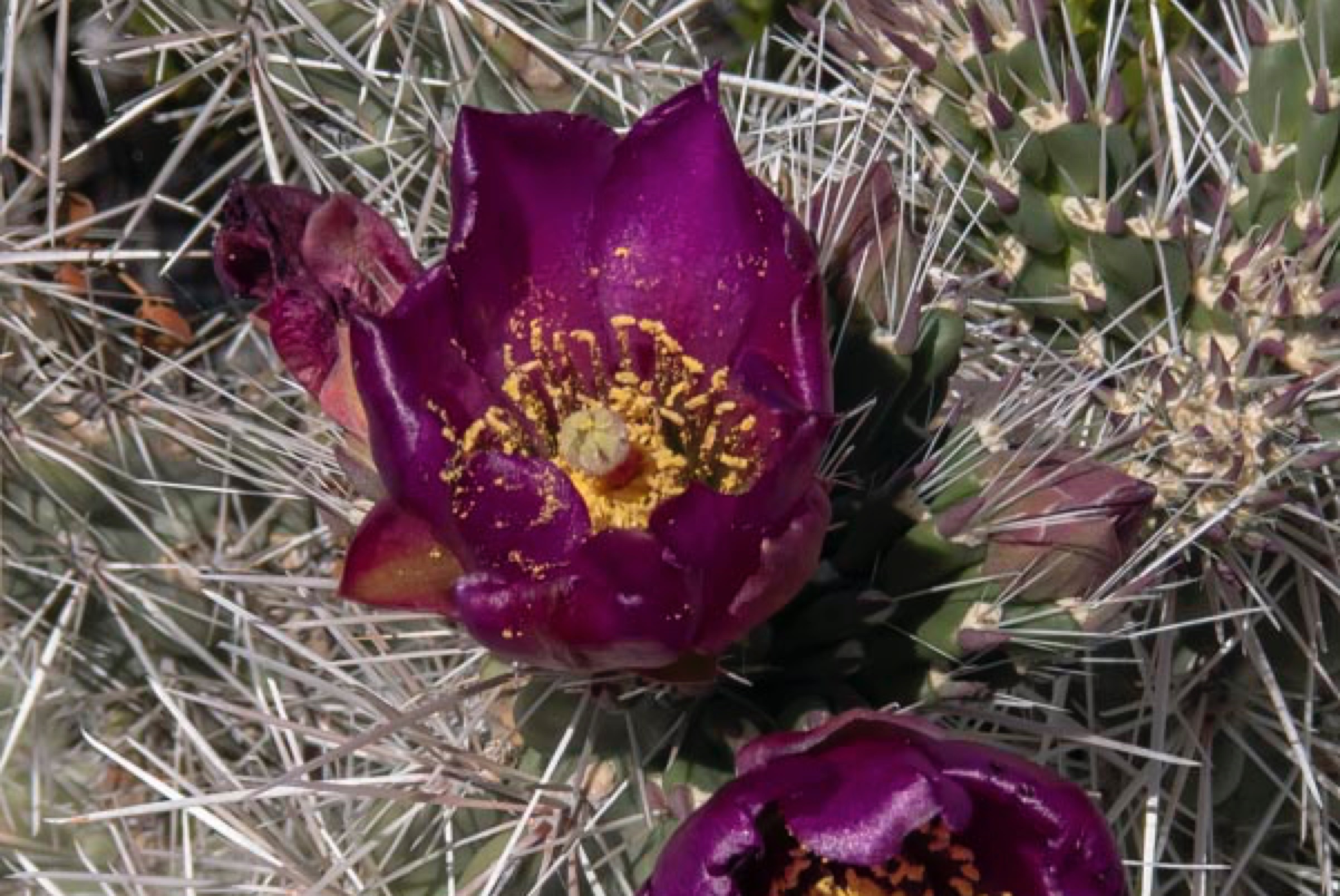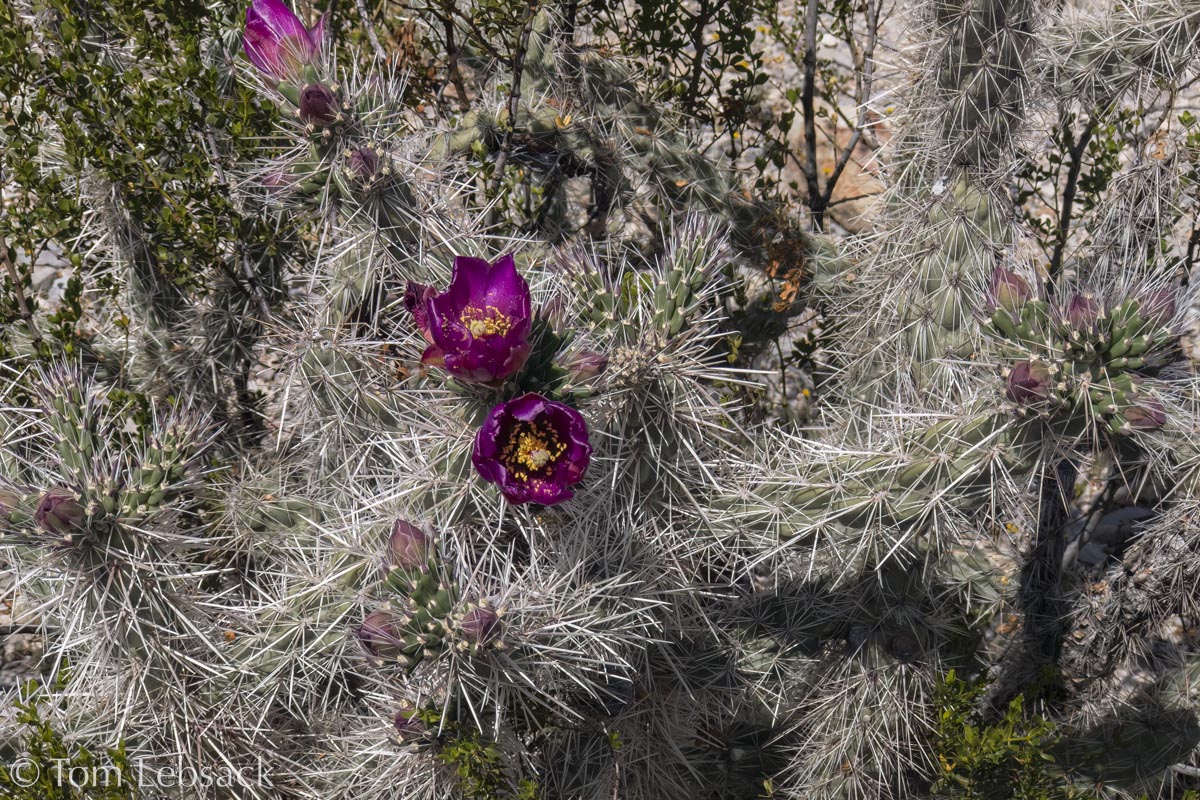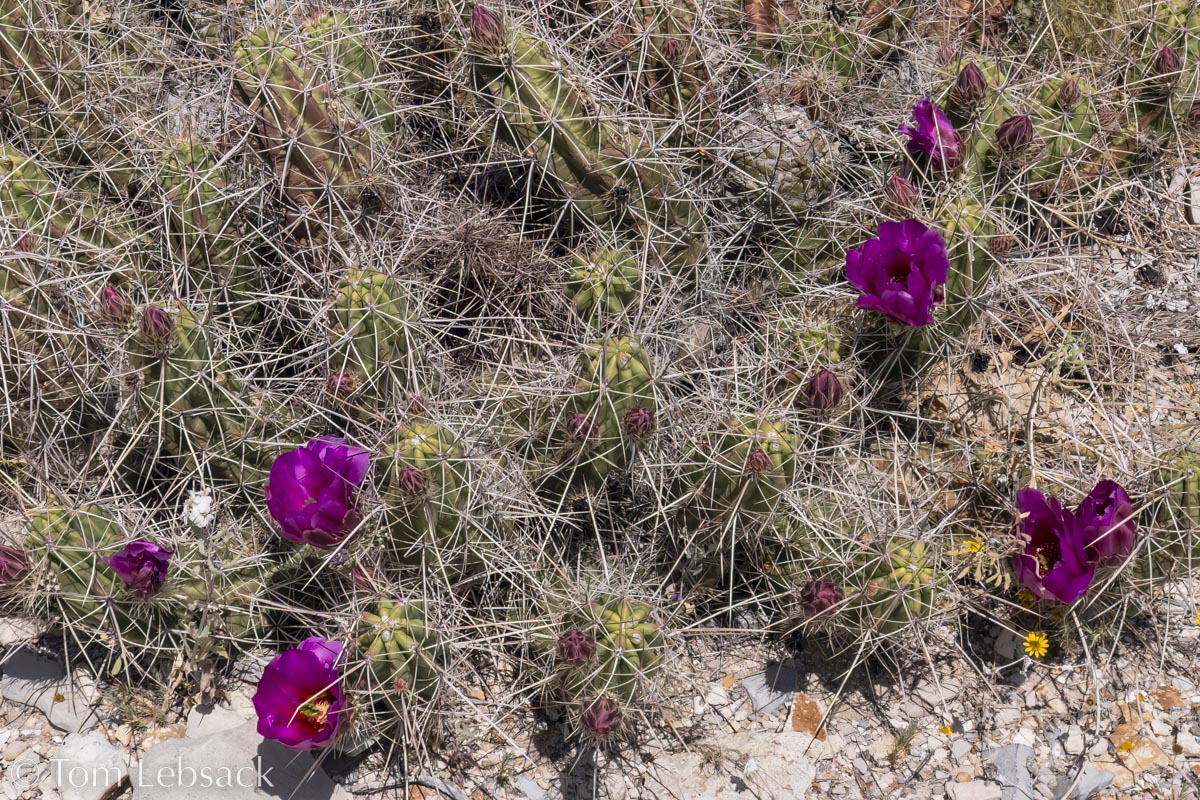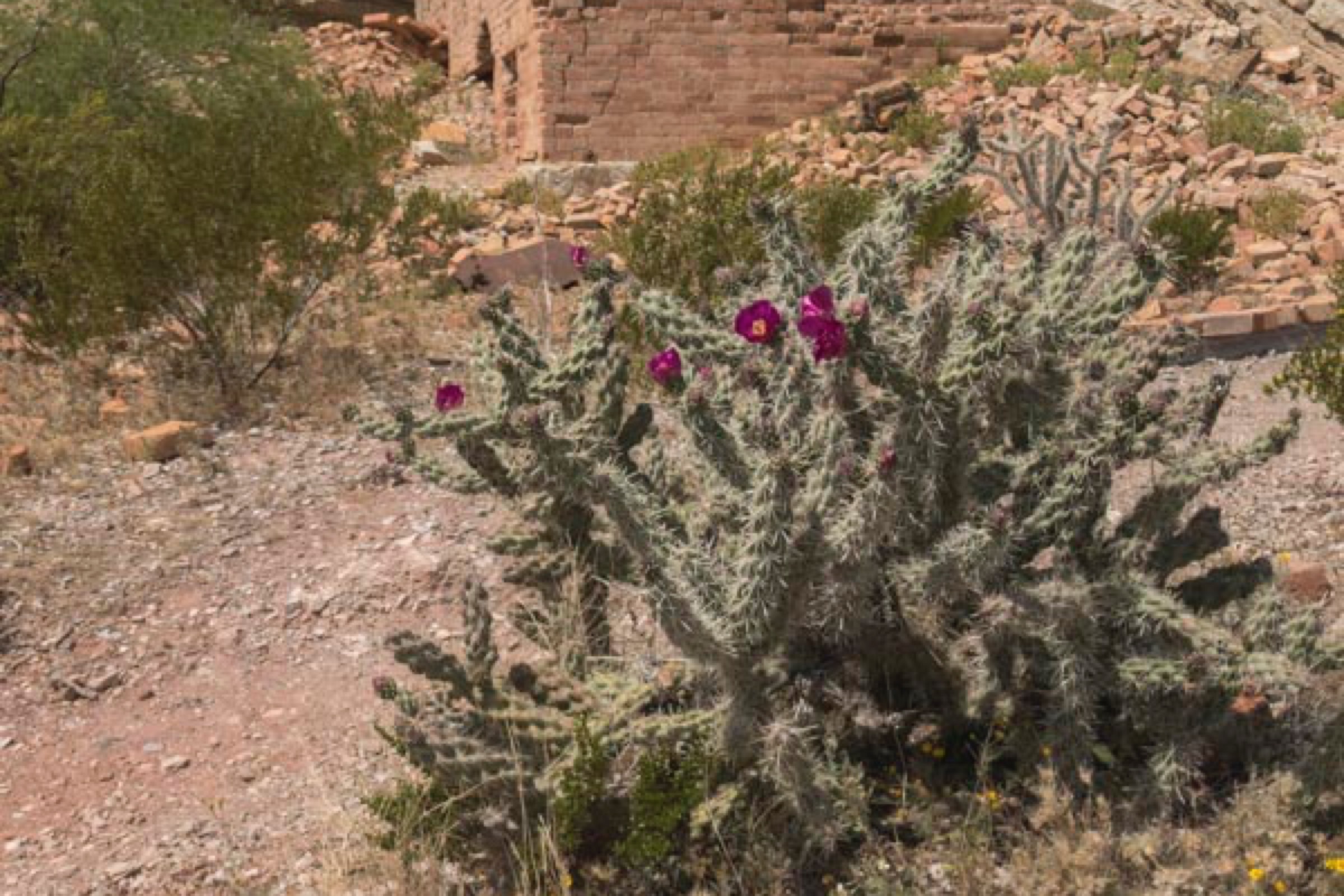Texas Wildbuds
Cylindropuntia imbricata var. argentea
(Big Bend Cholla)
| Scientific Name | Cylindropuntia imbricata var. argentea (Opuntia imbricata var. argentea) | USDA PLANTS Symbol | CYIMA |
| Common Name | Big Bend Cholla | ITIS Taxonomic Serial No. | 913455 |
| Family | Cactaceae (Cactus) | SEINet Reference |
Click Here |
| Description | Habitat: Gravelly limestone soils of hills, washes and flats 2000 to 2400 feet elevation; endemic to a small portion of Big Bend National Park around the Mariscal Mtn. and into Mexico. Plant: Shrub less than 4 feet tall, densely spined and branched with relatively short, stout joints (compared to C. imbricata var. imbricata). Pads & Spines: Joints 4 to 8 inches long, 3/4 to 1-1/2 inches in diameter; tubercules up to 3/4-inch long; areoles more closely spaced than other imbricata; silvery spines with 10 to 20 spines per areole. Inflorescence: Flowers 2 inches across with pinkish to deep magenta tepals, outer ones having an olive hue in the middle portion; deep reddish-purple filaments less than 3/8-inch long; light yellow to cream-colored anthers; style about 3/4-inch long or less with cream-colored, stigma lobes. Bloom Period: Early April. Fruit: Yellow, spineless, inverse conical, 1 to 1-5/8 inches long, 3/4 to 1 inches across with deep tubercules; long-lasting. References: "Little Big Bend" by Roy Morey, "Cacti of Texas" by Powell, Weedin and Powell and "Manual of the Vascular Plants of Texas" by Correll and Johnston. | BONAP Distribution Map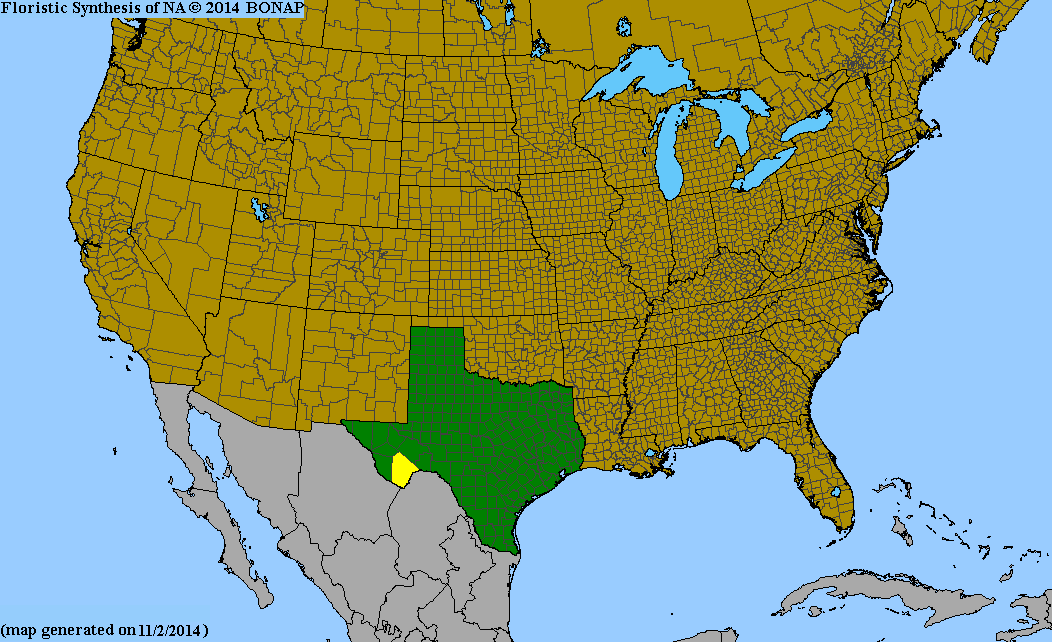 Map Color Key Map Color Key |
Texas Status: Native |
Banner photo of Castilleja indivisa and Lupinus ssp. taken along FM 1323 north of Johnson City, Blanco County
© Tom Lebsack 2025
Every attempt is made to provide accurate, up-to-date, and relevant information, but the completeness or accuracy of any information presented on this website cannot be guaranteed. I use authoritative references to insure high standards of accuracy and review and update the information frequently.
